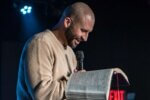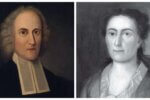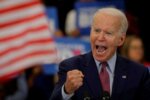Looking for straight answers? You’ll find them at Bishop Arthur Brazier’s church.
At 81, Bishop Arthur Brazier still refuses to play it safe. Back in the ’60s, when many black Pentecostal pastors worried about mixing politics with religion, Brazier was at the forefront of the civil rights movement.
In fact, he was a confidant of Martin Luther King Jr. when the famous activist temporarily resided in Chicago.
Forty years later, Brazier’s still at it. His Apostolic Church of God (apostolicchurchofgod.net) is renowned for its scores of outreach ministries and commitment to reviving its inner-city neighborhood.
When he’s not behind the pulpit ministering to his 14,000-member congregation on the South Side of Chicago, Brazier is busy rallying people together to bring about both social and spiritual change in the ‘hood. He has organized protests against slumlords and segregated schools. And, he has founded a handful of nonprofit organizations that are designed to address community needs.
So what’s the secret to the man’s effectiveness, the thing that helped him grow his church from 100 members in 1960 to megachurch status? It’s simple, really. Brazier preaches the gospel.
While many would sugarcoat and dress up their sermons as topical, therapeutic and seeker-sensitive “conversations,” Brazier has always shot straight from the hip with a no-frills, Christ-centered approach.
“I have never preached a sermon on current events,” he says. “My concept is the gospel of Jesus Christ and His salvation.”
Brazier takes the direct approach. Ask a straight question, you get a straight answer.
Why are so many African American men staying away from the church today? “So many of them are turned off by churches because of the hypocrisy they’ve observed in some black preachers–you know, the womanizing and living high on the hog. Many African American preachers have only contributed to those stereotypes and perceptions.”
What about the church and the gay debate? “Homosexuals are welcome here [in my church]. I just think they should be working to overcome their behavior, not flaunting it publicly.”
And what about preachers who try to make the gospel message culturally relevant? “I think Christians need to be a little more forceful and take a strong stand,” he says. “One of the problems with Christianity is that a lot of us are so liberal in our thinking that the Bible is no longer the blueprint and the guide. We interpret the Bible based upon the modern situation, and I think that’s a big mistake. When you don’t believe in anything, you don’t stand for anything.”
Winning Formula
Even though Brazier takes a strong stand on issues, he is that unique kind of Christian leader who elicits praise from both the most conservative of evangelicals and the most liberal of mainliners, because he shares something in common with both groups: an unwavering commitment to God’s holy Word and an indomitable witness as an agent for social change. In the Windy City, his heroic accomplishments precede him, crossing all denominational boundaries.
“It seems to me there is no minister in the city of Chicago who has had a greater impact than Bishop Brazier,” the late Roman Catholic Monsignor John Egan once told the Chicago Tribune.
Even Chicago’s Mayor Richard M. Daley has recognized Brazier’s inestimable contribution: “The imprint of Bishop Brazier’s work is very apparent,” he told the Tribune, “new and affordable housing, a vibrant business community and a solid foundation of neighbors and members of the congregation committed to carrying on his activism and embracing his faith.”
Bishop George Bloomer, senior pastor of Bethel Family Worship Center in Durham, North Carolina, and the founding president of Young Witnesses for Christ, a national youth ministry, says of Brazier, “He is an extremely focused, no-nonsense preacher who knows the pulse and the heartbeat of the community, and is greatly respected by the political arena as well as the religious community.”
Brazier and Bloomer became fast friends after meeting eight years ago at a Pentecostal leadership conference. “He invited me to come minister at his church,” Bloomer says. “When I got there, I was shocked at the level of excellence in ministry. The church runs like a Timex watch. It’s pumping every minute–there were no irrelevant parts.”
Bloomer couldn’t help comparing Brazier’s Apostolic Church of God (ACOG) to another innovative and efficiently run church he had visited–Robert Schuller’s Crystal Cathedral in Southern California. For that reason, he has half-seriously dubbed Brazier “the African American Robert Schuller,” a designation that Brazier promptly resists. (“Let’s just say that there are some major differences in our styles,” he says diplomatically.)
Brazier has been especially successful at assimilating men into his congregation. Though women still seem to outnumber men in pews nationwide by at least 2-to-1, the thousands of committed male churchgoers at ACOG is striking.
In years past, the church has sent busloads of men to Promise Keepers conferences and in 1996 to the Million Man March. Brazier says he has no formula for drawing men into the church, save for what he always falls back on–preaching the gospel.
Still, Brazier is acquainted with both ends of the spectrum: the men who are repelled by the church and those who cannot resist its fire. As it turns out, he has lived on both sides.
Keeping His Distance
Arthur M. Brazier grew up on the South Side of Chicago during the Depression era. His mother, Geneva, was a devout Pentecostal who raised him in the faith.
Brazier attended Sunday school and church. He said and did all the right things. But as soon as he saw his chance to break loose, he jumped at it.
“My parents didn’t demand that I go to church,” he recalls. “But I went every Sunday until I was 15 and got a job on the milk wagon as the milkman’s helper.”
Finding a job in that tight economic climate gave him a credible excuse on Sunday mornings. “That was the beginning of my moving away from church.” For the next decade, Brazier would only show up at church when he needed to quell a guilty conscience.
When Brazier was drafted into the Army in 1942, World War II was just underway. He toured China, Burma and India, and was awarded two battle stars for serving in a combat zone. And like most young soldiers in the midst of the war, he quickly began to rediscover his spiritual roots.
“Someone has said there are no atheists in foxholes, and it’s true,” he says. He recalls doing a lot of praying (“just like my father had taught me as a boy”) and singing gospel tunes on the boat ride overseas. “One of our Army newsletters observed that there were a lot of ‘saltwater Christians’ on those ships,” he says.
The Army was a mixed bag for Brazier. Though the pressure often felt overwhelming, he learned how to deal with his fears. He recalls: “I said to myself, ‘If I get out of here, I’ll never be afraid of anything else. If I could go through this, I could go through anything.’ So it changed my thinking a lot about who I was and what I could endure.”
Brazier was discharged in 1945 but quickly returned to his apathetic ways when it came to God. “I liked to go out to the nightclubs and have a good time,” he says. “I didn’t do drugs or anything. I just wasn’t interested in church.”
Occasionally, he would feel a bit guilty for not going to church, but he would quell those feelings by making a cameo appearance every couple of years. That, it seemed, was enough to keep his conscience in check.
Altogether, he managed to avoid “the church thing” for nearly a decade. Then, in the summer of 1947, his mother strongly encouraged him to attend a church picnic. “I told her I’d attend, but that I would be looking for a wife,” he says.
In fact, he did meet a lovely young woman at the picnic. Her name was Esther, and Brazier quickly took an interest. He asked if he could call her, and the two struck up a friendship. Soon, Brazier found himself “hooked.”
Before the couple could get too serious, Esther exerted a bit of her positive influence and got Brazier back in the habit of attending church. But the real transformation occurred one night when Brazier was reading his Bible. He remembers sensing God’s Spirit working on him while he was reading through the book of Revelation.
“I had this beautiful vision of God wiping away the tears from His people’s eyes. There was no more death, no more sorrow. Right then and there I dropped to my knees, with my mother and father by my side, and I gave the Lord Jesus my life.”
Brazier asked Esther to be his wife, and the couple was married in February 1948. After that, Brazier thought he would settle in to his job as a postal carrier, but God’s Holy Spirit was just getting warmed up.
Soon, he began to feel the call to preach God’s Word. His journey from unbelief to faith was complete, but his ultimate journey was just beginning.
Something More
In the intervening years, Brazier has watched a small Pentecostal mission-church grow into a massive megachurch. And no matter how one looks at it, there’s no explanation for the phenomenal growth of his church and related ministries except for the power of God’s Spirit.
He brought no marketing savvy to the endeavor. He did not plant his church in a blossoming suburb where growth would be inevitable. The people who make up his congregation are a diverse demographic of middle-class and lower-income African Americans; few whites populate this crowd.
He did not even bring the classic “whoop” of the old-time Pentecostal preachers to the pulpit. (Brazier’s preaching style draws its force more from the message than the method.) Rather, he dug in where God had called him and simply preached the gospel–both through word and deed.
Today, ACOG meets in a beautiful state-of-the-art facility. Thousands come out every week to worship and serve. And this lanky preacher–who plays two hours of tennis every Saturday and, says George Bloomer, “whips everybody on the court”–seems to get more dynamic with age.
These days, he talks a lot about training laypeople in personal evangelism and discipleship. He realizes that the real future of the church lies not in big church services and elaborate ministry programs but in the prayers and gifts of the people.
“To be a personal evangelist, you have to know your Bible,” he says. “It’s one thing to stand up behind a pulpit and preach to a lot of people, and when you’re finished no one’s going to ask you a lot of questions.
“It’s another thing when you’re talking to somebody one-on-one who does not necessarily believe in your particular faith or even believe in God. They have a lot of questions that need to be answered biblically.”
Brazier is encouraged, though, by the spiritual yearning that young people today are demonstrating. “I see that people are reaching out for some kind of spiritual quality in life,” he says.
“There was a time when most people who came to the church were either little children brought by their parents, or they were old. Now most of the newcomers fall into the 19-to-45 age bracket, and they are coming on their own.”
Mixed with the positive trends, however, are many of the same old negative ones: unwed mothers, teen pregnancies, gang violence and a general disregard for God’s holiness.
That’s why it’s so important that the church keep a presence in the city, Brazier says. Someone has got to be salt and light there because, deep down, people want to hear the truth.
He explains: “We are attracting men and women from every walk of life: people on welfare, doctors, lawyers, social workers, policemen, gang members. No matter who they are, people are looking for something more.”
Edward Gilbreath is managing editor of Christian Reader magazine.






Leave a Comment
You must be logged in to post a comment.